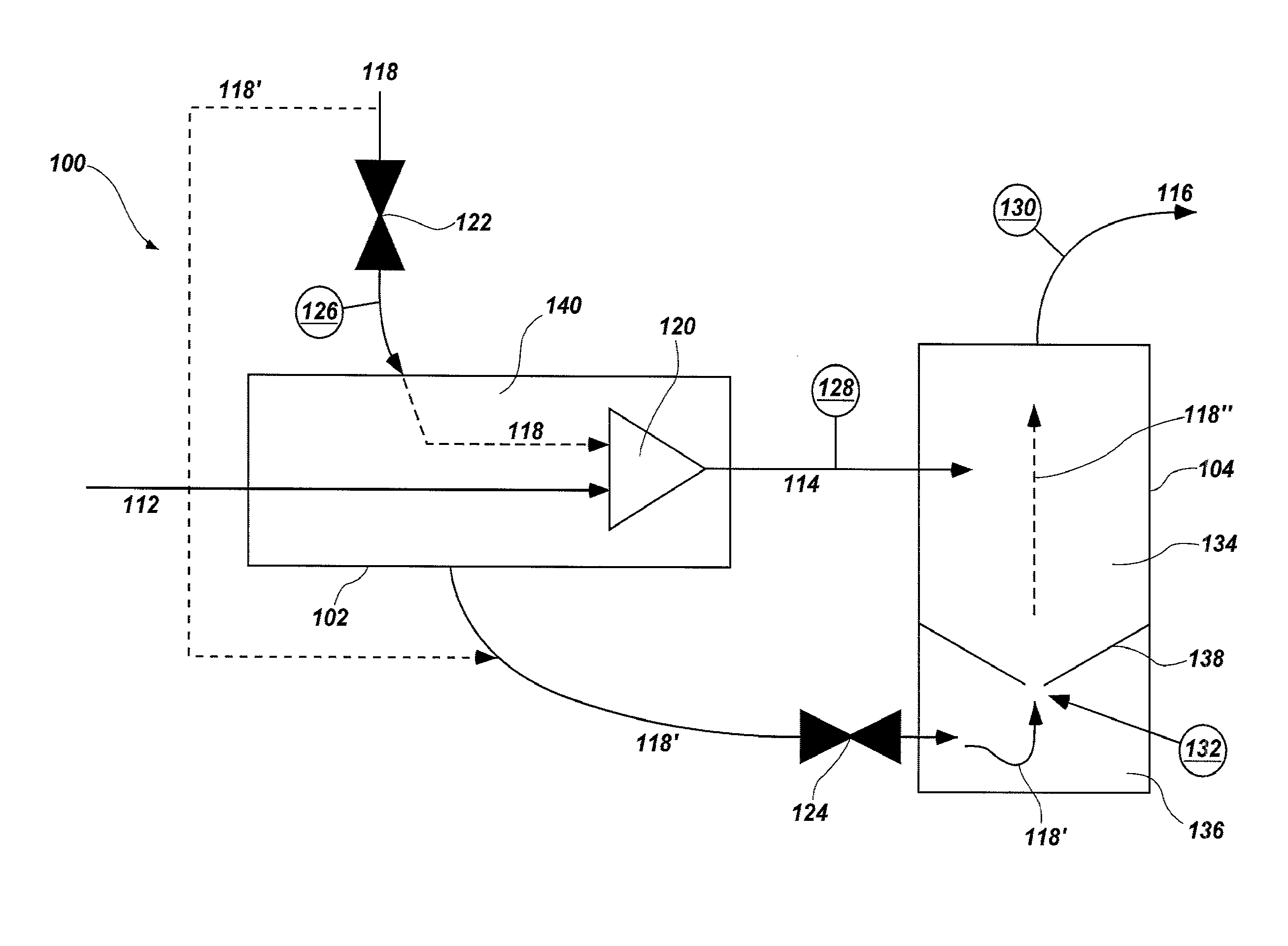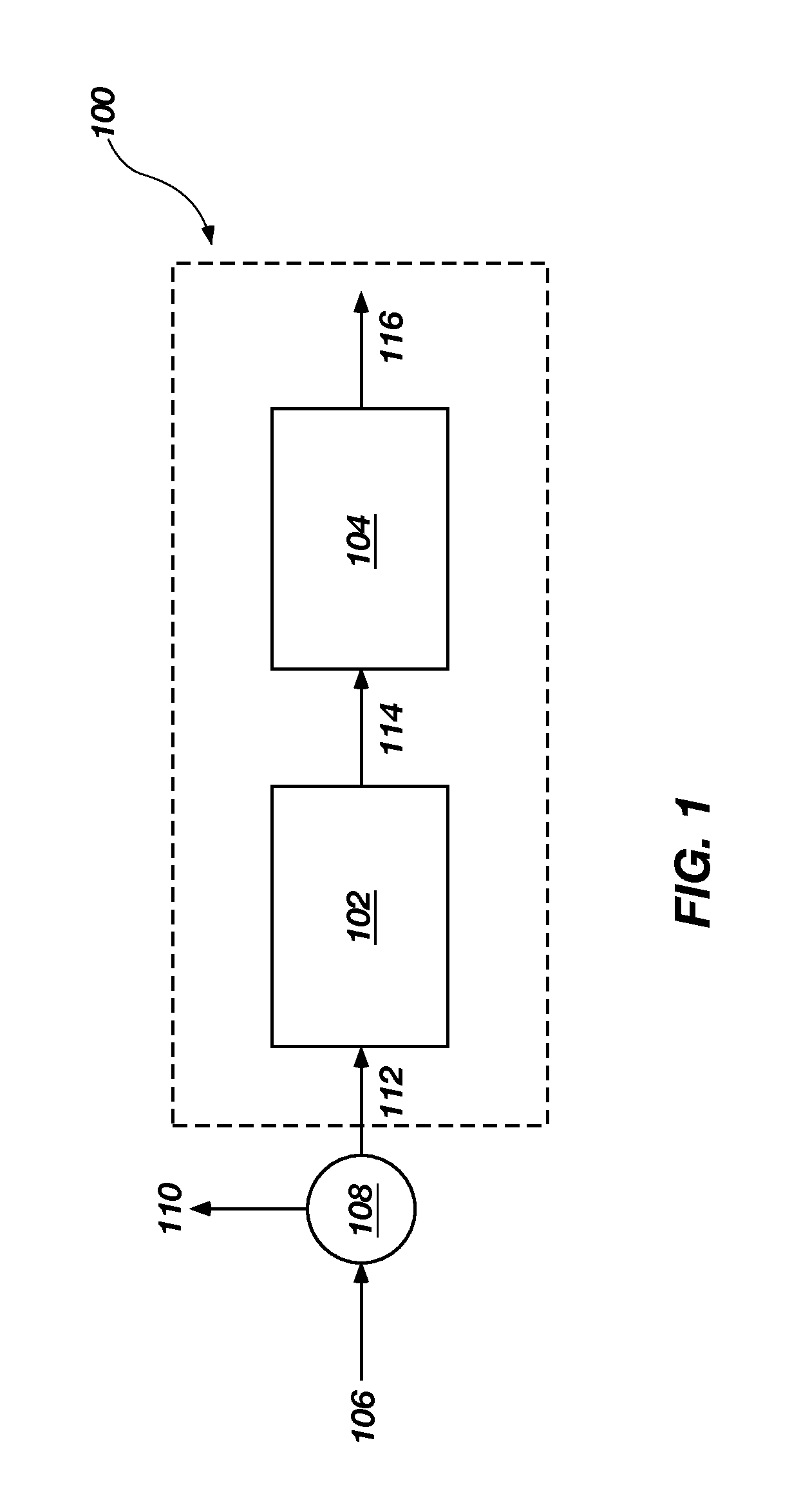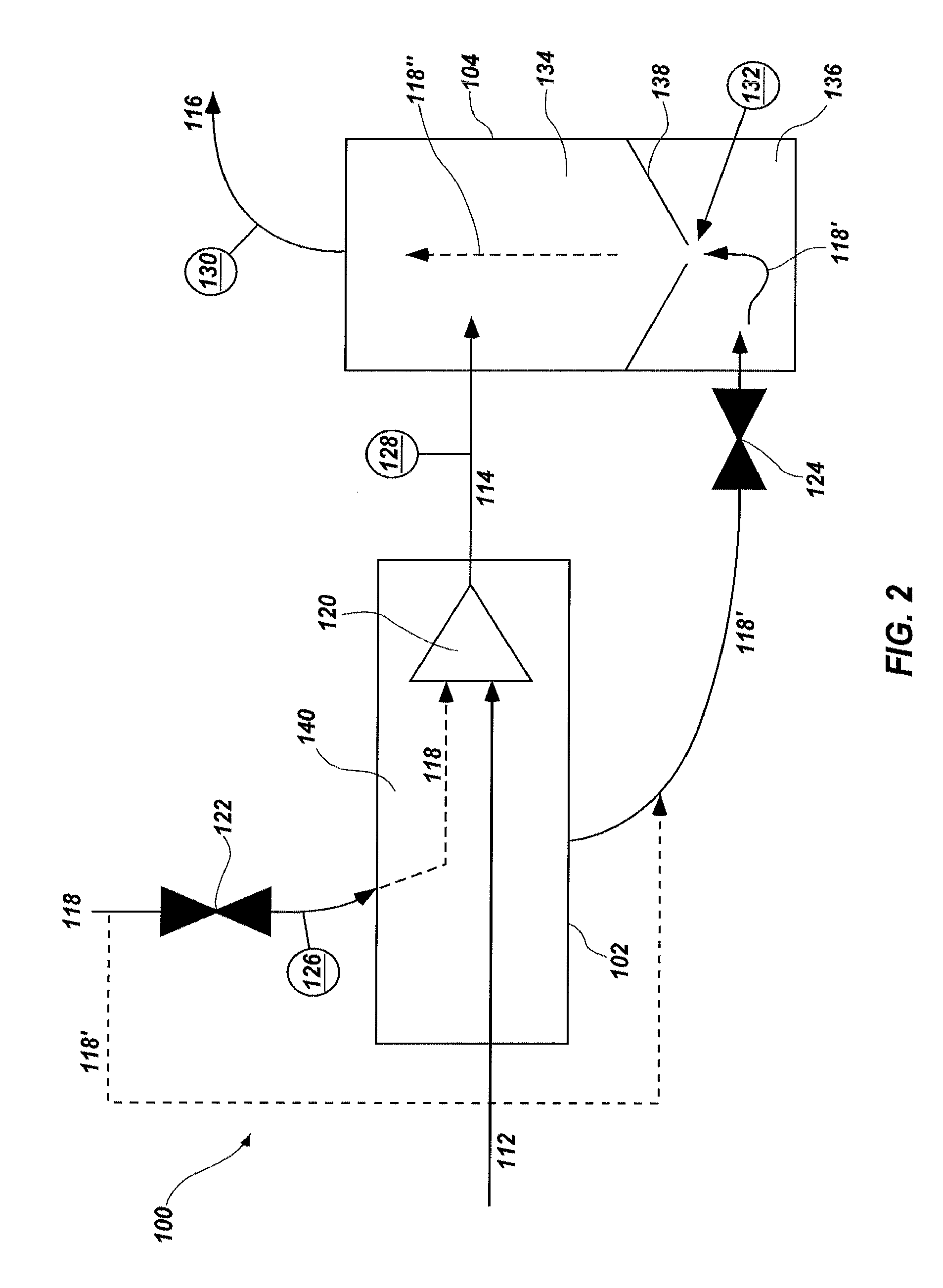Sublimation systems and associated methods
a technology of sublimation and sublimation, applied in the field of systems for vaporization and sublimation and methods, can solve the problems of carbon dioxide removal, natural gas liquefaction process, carbon dioxide removal,
- Summary
- Abstract
- Description
- Claims
- Application Information
AI Technical Summary
Problems solved by technology
Method used
Image
Examples
Embodiment Construction
[0016]Some of the illustrations presented herein are not meant to be actual views of any particular material, device, or system, but are merely idealized representations which are employed to describe the present invention. Additionally, elements common between figures may retain the same numerical designation.
[0017]FIG. 1 illustrates a system 100 according to an embodiment of the present invention. It is noted that, while operation of embodiments of the present invention is described in terms of the sublimation of carbon dioxide in the processing of natural gas, the present invention may be utilized for the sublimation, heating, cooling, and mixing of other fluids and for other processes, as will be appreciated and understood by those of ordinary skill in the art.
[0018]The term “fluid” as used herein means any substance that may be caused to flow through a conduit and includes but is not limited to gases, two-phase gases, liquids, gels, plasmas, slurries, solid particles, and any c...
PUM
 Login to View More
Login to View More Abstract
Description
Claims
Application Information
 Login to View More
Login to View More - R&D
- Intellectual Property
- Life Sciences
- Materials
- Tech Scout
- Unparalleled Data Quality
- Higher Quality Content
- 60% Fewer Hallucinations
Browse by: Latest US Patents, China's latest patents, Technical Efficacy Thesaurus, Application Domain, Technology Topic, Popular Technical Reports.
© 2025 PatSnap. All rights reserved.Legal|Privacy policy|Modern Slavery Act Transparency Statement|Sitemap|About US| Contact US: help@patsnap.com



